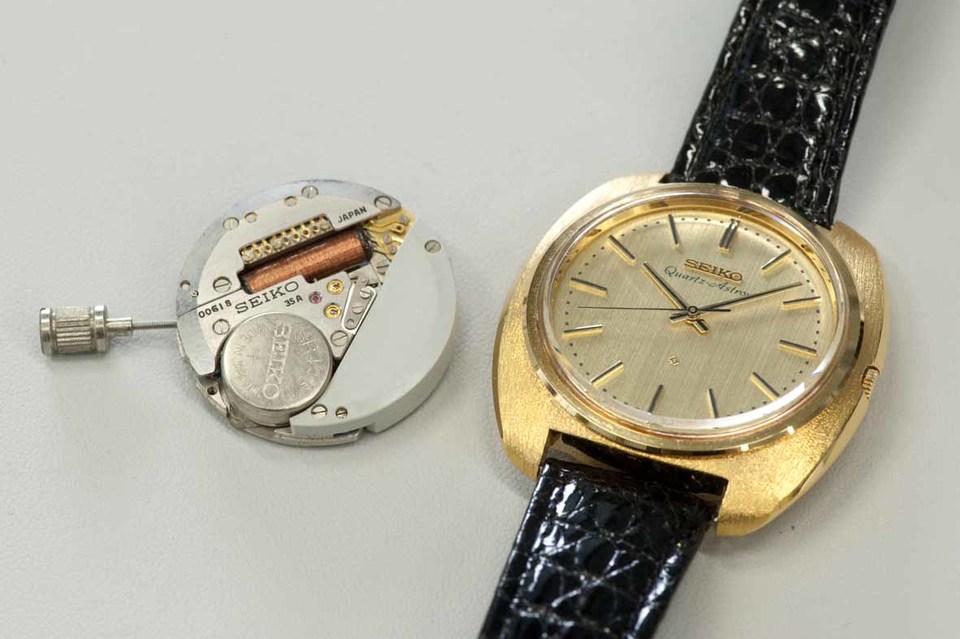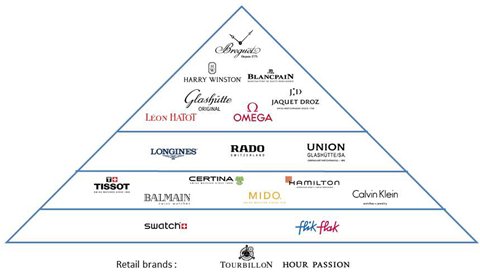The Complete History of the Swatch Group
Many of the largest watch brands in the world are, and have been for some time, divided up into different groups, larger corporations that help to manage them while also providing them with resources and distribution they would otherwise be lacking. There are a number of these groups, in both Switzerland and Japan, but perhaps the most subtly powerful one in the horological world is the Swatch Group.
Swatch Group Logo
Source: Longines
This video is the basis of this article, the complete history animated. Enjoy!
To be able to effectively explain the foundation and progression of the Swatch Group, it is important to first wrap discuss some history that extends much, much farther into the past. All the way back to 1735, with the founding of one of Swatch’s biggest current brands - Blancpain - to be precise. Why is this particularly important? Well, by signing his name in a register with the building that would become his shop, Jehan-Jacques Blancpain had effectively established what is now recognized as the world's oldest watch brand. Sure, people had been making watches prior, but not to the professional, career and business oriented extent that Blancpain had, and this definitely makes the brand a titan in the industry.
There’s another Swatch Group brand that has a pretty storied history of its own - Breguet. Founded in 1775 by a Swiss-born, Paris-native watchmaker named Abraham Louis Breguet, the brand (and it’s namesake watchmaker) are responsible for some of the most impressive horological innovations in history. Self winding watch movements? You can thank Breguet for that one. Perpetual calendars? The Breguet 1369 pocket watch is considered to be the first. And last but not least, the most well known of them all: the tourbillon.
Breguet 1369 Gregorian Calendar Pocket Watch
Source: Breguet
The third major Swatch Group brand worth discussing is La Generale Watch Co. which likely does not sound particularly familiar, because nowadays, the brand is known as Omega. The brand was founded in 1848 by Louis Brandt, a watchmaker that began his career making key-wound pocket watches. After he passed away, the business became the property of his sons, who would go on to begin producing wristwatches. After the rampant success of this endeavor, they took on the name of this wristwatch sub-brand and made it the company’s official name: Omega.
Last, but certainly not least, there is Tissot. In Jura, Switzerland, a father and son team began assembling their own watches and distributing them throughout Le Locle and the surrounding areas. That father and son team was Charles-Félicien Tissot and Charles-Émile Tissot, who had made a name for themselves by developing the first mass-produced pocket watches and the first pocket watches capable of tracking two separate time zones. But their real claim to fame, in the world of the Swatch Group, comes in 1930.
The year is 1930, and Omega and Tissot have merged together to form Société Suisse pour l'Industrie Horlogère (SSIH), in many ways a response to the economic turbulence surrounding the First World War. This new conglomerate would set out to produce their own movements in-house, including all of the requisite components, and would, along the way, acquire other smaller brands to make this as seamless as possible.
In 1931, another group was formed - Allgemeine Schweizerische Uhrenindustrie AG (ASUAG). Where SSIH was a primarily French-speaking collective, ASUAG was founded by the more German-speaking members of the Swiss watch industry, a company that focused not on individual brands and timepieces, but rather on movements and other components. They became renowned for this, especially through the onset of World War II. Where things get interesting, though, is that because Switzerland remained a neutral party during the war, their timepiece manufacturing wasn’t being funneled into the military, and where other brands in other countries were struggling, the Swiss were thriving. This is likely a large part of why the Swiss have managed to outdo every other major nation in terms of being well known for watchmaking - they were the only nation to continue innovating during the height of world conflict.
This trend continued well into the middle part of the century, when a new major (more so than ever before) country entered the watch industry - Japan. At the end of the 1960s, Seiko introduced the Astron, the world’s first quartz watch. While at the time it was approximately 450,000 Yen, or a little over $1,250, it was less a swift change in the watch world than it was an omen of things to come.
Seiko Astron
Source: Time + Tide Watches
In April of 1972, as the world of quartz really began to start taking over contemporary watchmaking, Hamilton introduced the world’s first digital watch, Pulsar. If that name sounds ironically familiar, it’s because Pulsar is ironically now a sub-brand of Seiko. As the 70s progressed, many American watch companies (and, indeed, electronics companies such as Hewlett-Packard) were seeing a boom in sales with the introduction of LED screened watches. However, it wasn’t meant to last forever, and after the use of LEDs over LCD screens no longer became the favor, most of the American manufacturers folded. By the end of the decade, one thing was very clear - the war for watchmaking was one fought between Seiko and the Swiss.
However, many of the big Swiss brands just couldn’t sustain on their own or with their respective groups, and thus we saw the merger of SSIH and ASUAG into SMH, or Société de Microélectronique et d’Horlogerie. This merger, which took place in 1983, was overseen by a world-renowned watch consultant named Nicholas Hayek. While this is occuring, the ETA group finds themselves at the tail end of the development of a quartz movement of their own, one that contains only 51 parts instead of the typical 91. They dubbed this piece the “Simple Watch,” or “Swatch” for short. It debuted in March of 1983 for all of $39.
Swatch GB402
Source: Squiggly’s Watch World
Upon its release, the Swatch was a total hit. People the world over were fawning over the simple little disposable quartz watch and, as luck would have it, this success motivated Hayek to restructure SMH, take it private and out of the hands of the banks, and become its first CEO. All of these factors compounded together set the stage for the Swiss to reenter the watch world as a force to be reckoned with once again.
Once the company positioned itself as such, they began to make some of their acquisitions that will become more familiar to those who know the current structure of the group. In 1992, the company acquired Blancpain, and in 1998 they officially rebrand themselves from SMH to the Swatch Group. Then, in 1999, they purchased and integrated Breguet into the group. With that, the group officially had the majority of the structure we know today, minus a couple of brands.
Current Swatch Group Line-Up
Source: Nicolas G. Hayek Watchmaking School
By many, the Swatch Group brands are considered innovators of the highest order. This kind of innovation is most clearly seen through two examples: the Omega Co-Axial escapement and the Swatch Sistem51 movement (a mechanical movement that is entirely autonomously produced and features the signature 51 components that most Swatches do). However, they aren’t on top of the world just yet.
As has been talked about to death both in articles I’ve written and in videos by Jon, the biggest threat to the Swiss watch industry as an enterprise (that is to say, as an industry producing a product for consumers and not just something for watch geeks to fawn over) is the ration of brands popping up seemingly out of people’s bedrooms overnight, often founded on Kickstarter and entirely reliant on stellar Instagram and Facebook marketing to succeed. And succeed they do. The Swatch Group missed an opportunity to truly capture the market of young, internet savvy professionals and students who want a very simple, stylish watch without having to pay through the nose, and they just totally botched it. Even now, with Tissot’s Swissmatic line, a line that seems purpose built for those looking for a higher quality, mechanical alternative to Daniel Wellington and MVMT, they still can’t quite hit the youth of the world the way they should be able to. Only time will tell if they wise up and figure it out, or if they’re going to have to totally restructure themselves just to keep on surviving.
Post Written by Logan Hannen, video script and sourcing by Jon Shanahan




